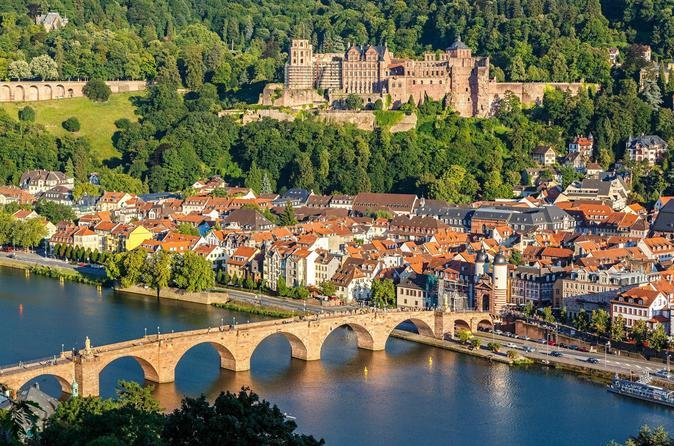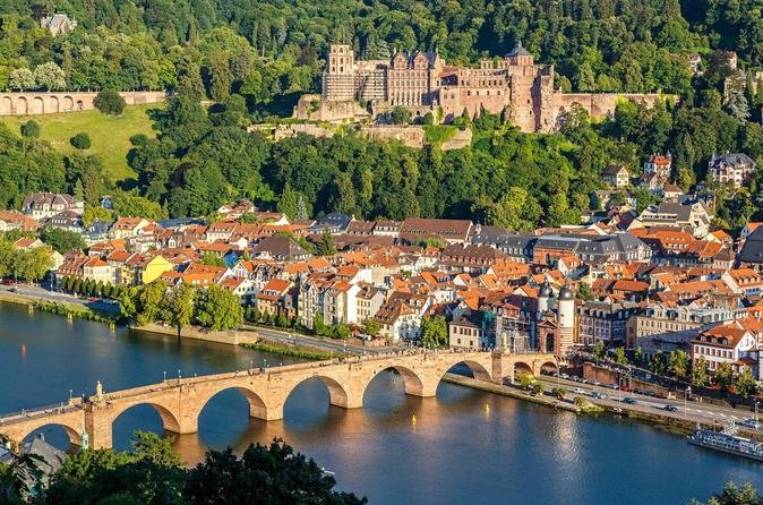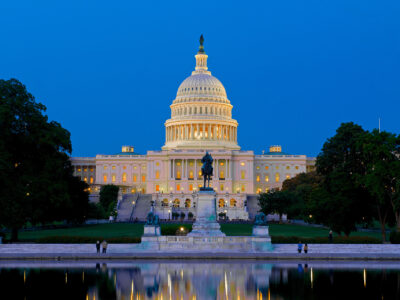
A mix of Gothic and Renaissance styles, the Heidelberg Castle dominates the old town
The first thing that strikes a visitor to Heidelberg, located in the Neckar valley about 100 km south of Frankfurt, is the youthfulness of its population. The youth are there, wherever you look, notably in the dynamic Old Town or Altstadt, with its paved streets lined by numerous restaurants and bars as well as stores selling a variety of branded luxury goods.
The contrast is stark between Heidelberg and most large cities of Germany. For a country that is amongst the fastest ageing societies in the world and where the median age is 47 years, as against 25 year in India, Heidelberg comes across as a spring of youth, mainly, if not entirely, thanks to the famed 14th century Heidelberg University as well as dozens of top-notch scientific research establishments, including four Max Planck Institutes, among global leaders for research in physics. Not just students, but even top research scholars head to this Mecca of higher education in Western Europe.
But even for those not inclined towards discovering intricacies of modern sciences, Heidelberg is very worthy of a visit as the compact town is flush with numerous monuments, many of them dating back to 12-15th century. One of the most famous landmarks here is the Heidelberg Castle which dates back from the 14th century. Overlooking the town from the nearby hill, the castle is a mix of Gothic and Renaissance styles and was destroyed during the Thirty-Year War as well as the World War II. The castle has several historical buildings as well as landmarks, some of them standing reasonably well even after centuries and dozens of wars. One such landmark inside the castle is the Heidelberg Tun or a giant wine barrel. Stored in the cellar of the castle, in the 18th century there were four gigantic barrels stocking the white wine produced in the vineyards of the castle. Only one of these barrels survives today. Built from wood of 130 oak trees, its original capacity was 221,726 litres. However, aging wood and damage due to time has reduced the capacity, which even now is a daunting 219,000 litres. Tourists can not only see the barrel, but also taste the wine, which of course is more recent than the 250-year-old barrel.
Though there is a motorable road from the town centre to the castle, a hike on a bright day is a much better option as it allows you to discover numerous viewpoints offering great views not just of the Altstadt, but also the Neckar river as well as the sloping hills across the river with their fertile vineyards that produce thousands of litres of the famous German Riesling white wines.
Not from the castle is a beautiful square, the Kornmarkt that used to serve as trading spot for corn grown around Heidelberg. Dominating the square is the Mariensäule statue, featuring three well basins on the sides, and commonly referred to as Kornmarkt Madonna, erected in 1718 by Peter van den Branden. Kornmarkt is lined with a number of souvenir shops and stalls selling traditional German food. The cobbled streets and narrow lanes recreate the ambience and atmosphere of 18th century Germany when Heidelberg was part of an independent Palatine state. But the area has been well conserved and a walk here transports you back to that epoch.
Located in the middle of Kornmarkt is the Church of the Holy Spirit, the most famous church of the city. One can get to the top of the steeple of the church, that towers above the rooftops of neighbouring buildings and not only dominates Heidelberg but also offers very beautiful panoramic views.
One of the best views is of course the Old Heidelberg bridge, a pedestrian-only bridge over the Neckar River that is as loaded with history as rest of Heidelberg is. Also known as Karl Theodor Bridge, it is an arch bridge that has been built and rebuilt at least nine times since it was founded. Made of Neckar sandstone, the bridge is always full of locals or tourists sitting and enjoying the views of the river and the hills on either side of the river.
Just outside Heidelberg is Schloss Schwetzingen, or Schwetzingen Palace, the summer residence of the princes in the Palatine period of 18th century. It is most notable for its spacious and ornate gardens.
The Marktplatz (market place) and Hauptstrasse (High Street) are filled with options if you are looking to do some shopping or have your meal. Both the areas also offer good options of bars and café so you can let your hair down after a day of exploration.






















